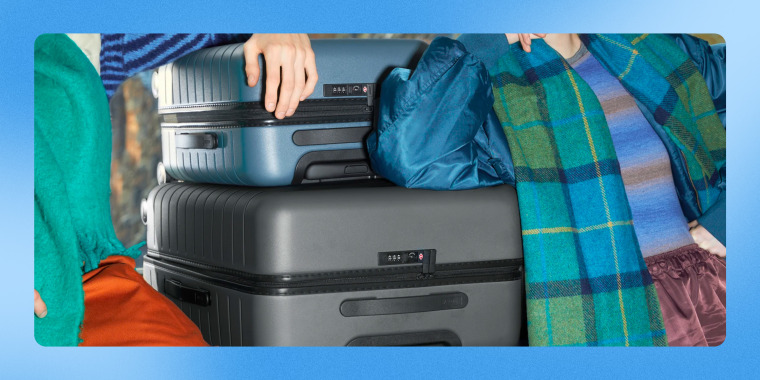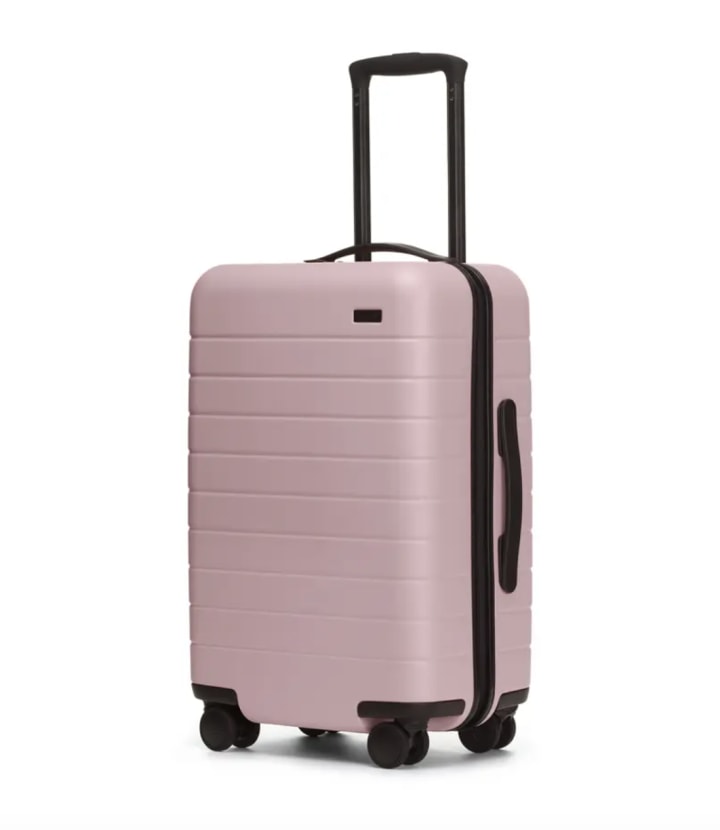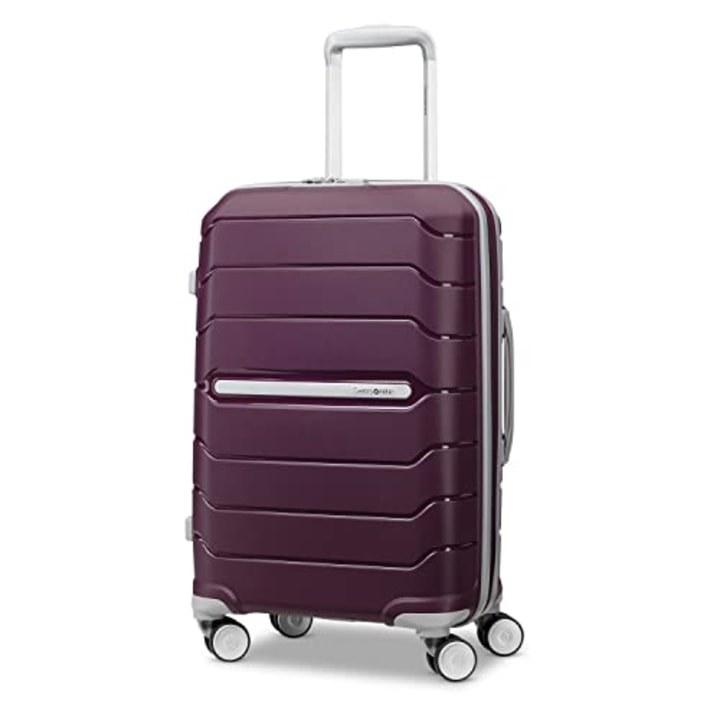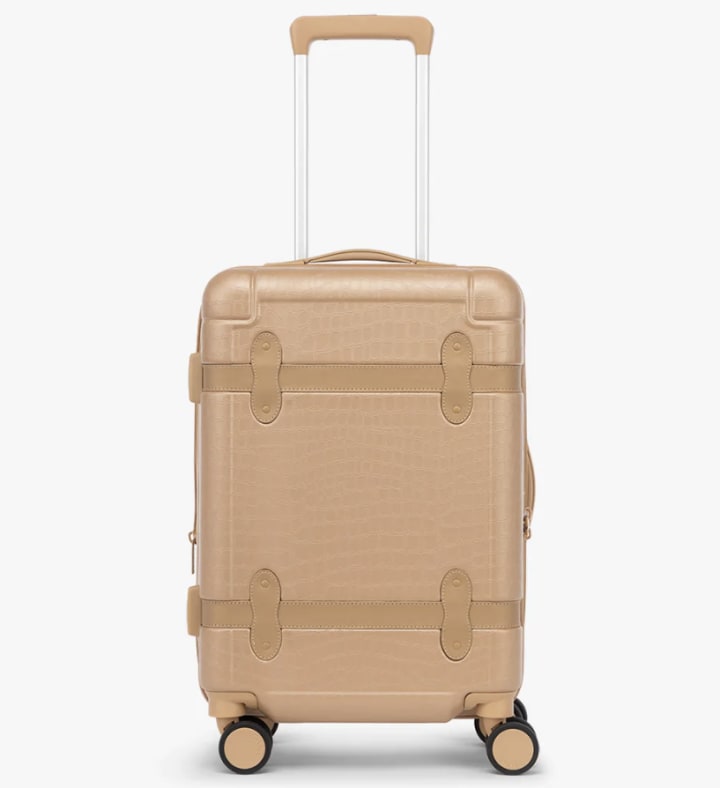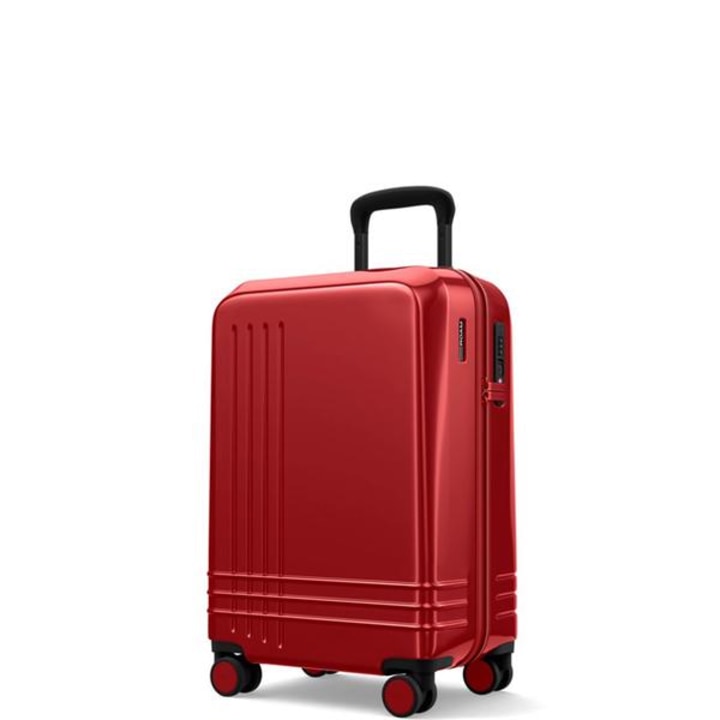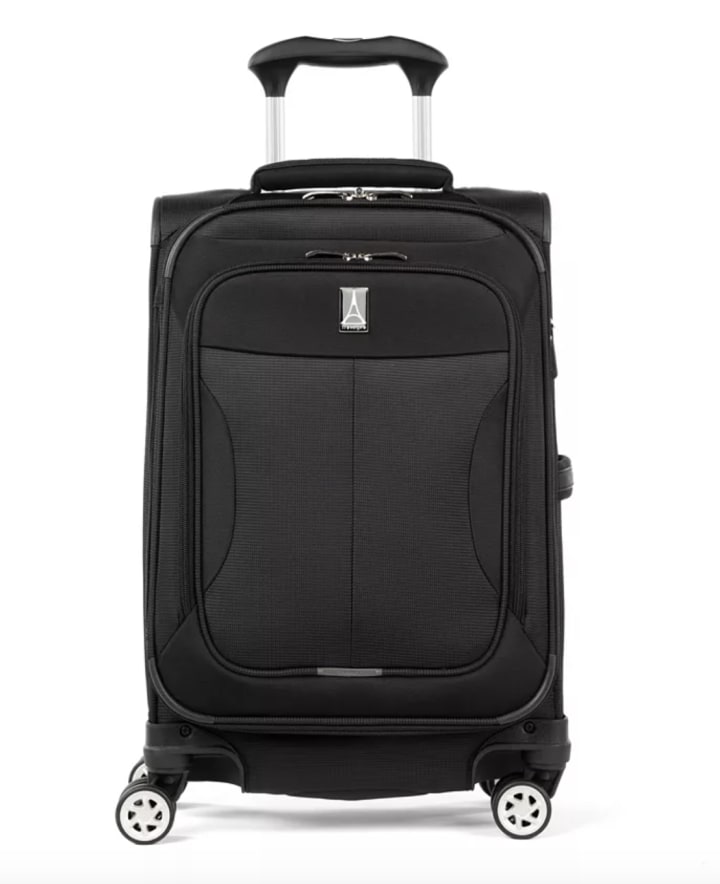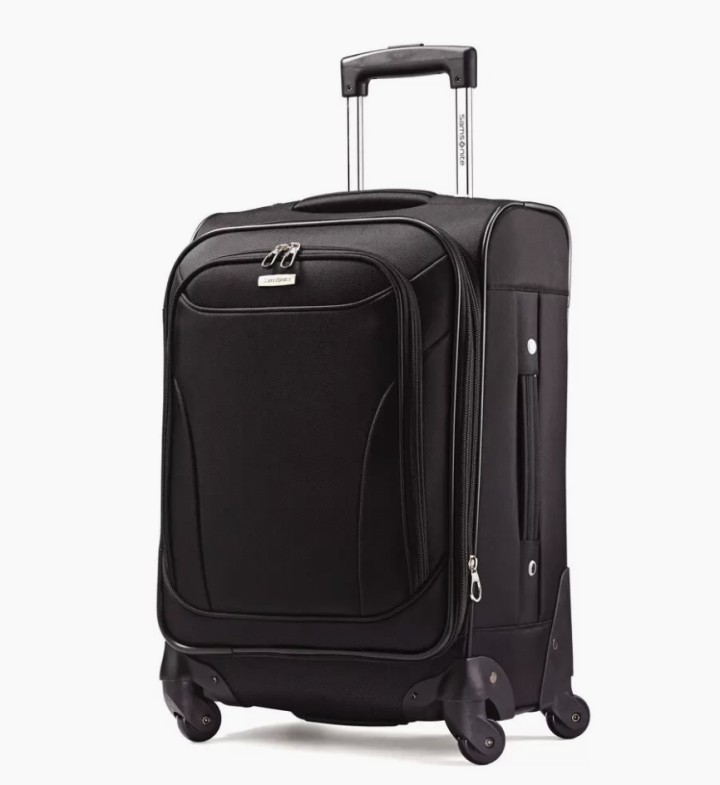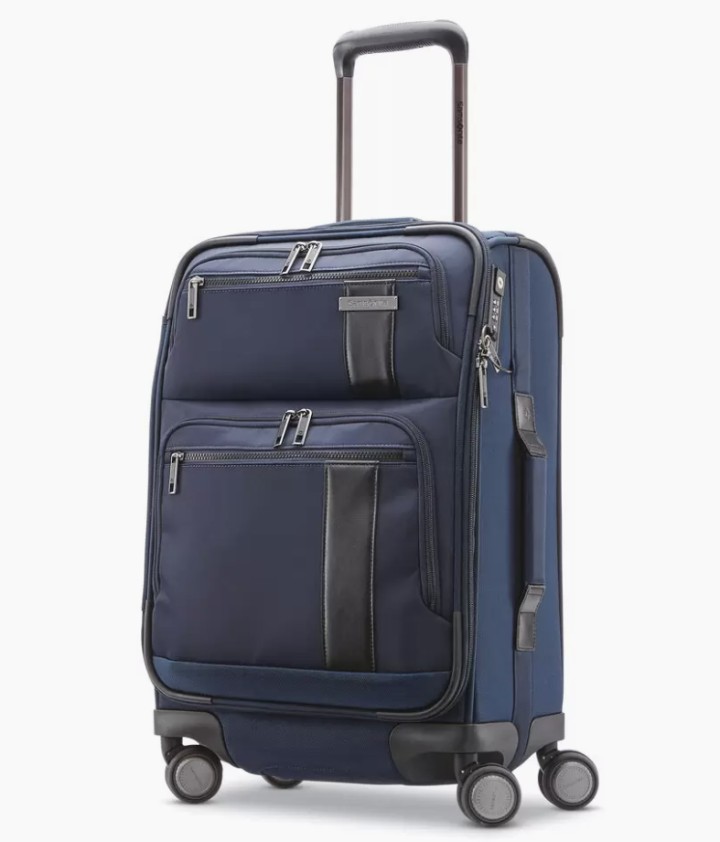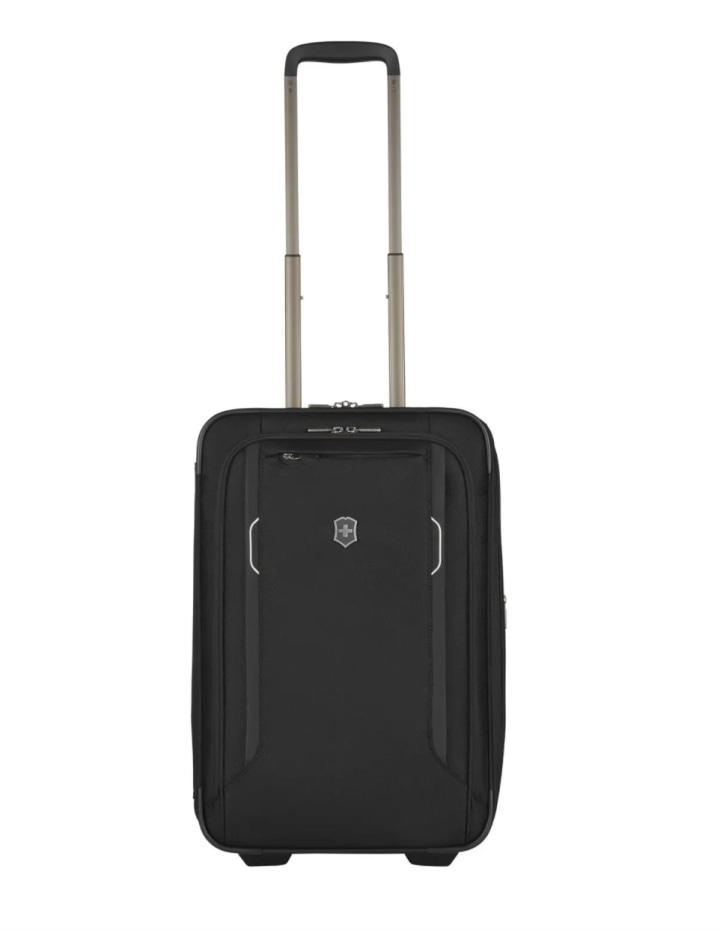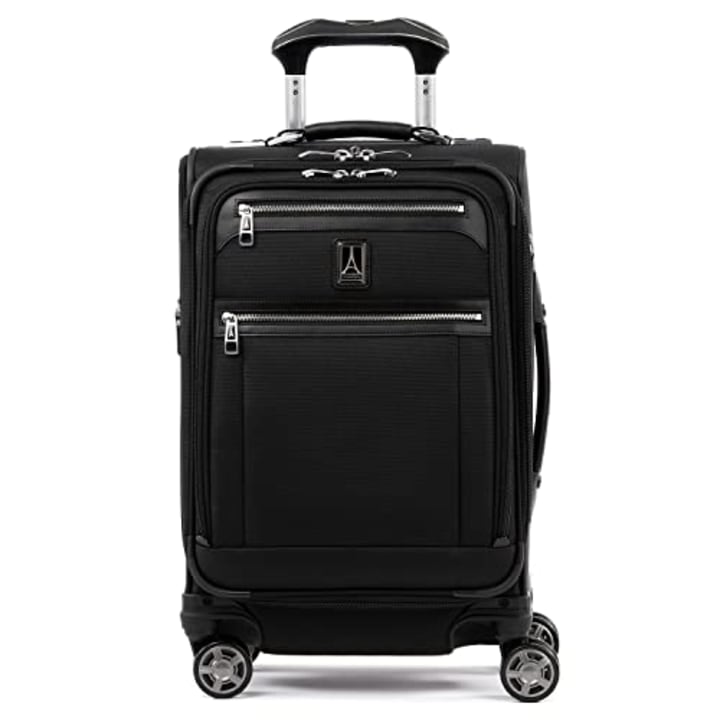Whether you’re the type to toss your essentials into your suitcase mere hours before your flight or neatly pack everything nights before your trip, you’ll need a quality carry-on to safely transport your belongings. Much like travel backpacks and weekender bags, carry-on luggage shouldn't slow down your journey or take up too much space — most should fit in the overhead compartment on major airlines, busses and trains. They can be a convenient accessory to hold immediate belongings and backup items should your checked luggage go missing.
SKIP AHEAD How we picked the best carry-on luggage | Hardside carry-on luggage | Softside carry-on luggage | Hardside vs. softside | Carry-on sizes: American, Delta, Southwest and more | What to consider when packing a carry-on — and other basic travel tips
Unlike a checked bag or suitcase, a carry-on is meant to fit above your seat in an overhead bin or, occasionally, underneath the seat (depending on its size). Most airlines allow you to board with one personal item (like a purse or laptop bag) and one carry-on (whether that’s a suitcase, duffel or backpack) — some will charge for one of those and some for both.
To help you find the right one for your summer travels, we consulted experts about what to look for in a carry-on bag and the differences between hardside and softside suitcases. We also compiled a few highly rated options to shop based on their advice.
Our top picks
- Best overall/editor’s pick: Away The Carry-On
- Best budget pick: Samsonite Bartlett Carry-On Spinner
- Best splurge: Victorinox Werks 6.0 2-Wheel Softside Carry-On
How we picked the best carry-on luggage
We sought out expert guidance to shortlist the best carry-on luggage for upcoming summer travel. Each option below is highly rated and considers four key features:
- Dimensions: We made sure to only include luggage that fit airlines’ criteria for size.
- Material: We recommended both hardside and softside luggage (more on this below).
- Wheels: Most of our picks include 360-degree spinner wheels for easy maneuverability.
- Locks: Many of our recommendations come with a TSA-approved lock to keep your belongings safe.
Top-rated carry-on luggage to consider
Given the guidance from travel experts, we compiled a few top-rated hardside and softside carry-on luggage options. While some of the suitcases on the market don’t meet the size regulations set by most airlines, we made sure to only include ones that do.
Hardside carry-on suitcases
Away The Carry-On
Away offers two versions of its carry-on suitcase: Standard and Flex, which expands up to 2.25 inches to make more room for packing your items. Both suitcases weigh about 8 pounds and offer dimensions that fit within most airlines’ allowances: 21.7 inches by 13.7 inches by 9 inches. The suitcase features a polycarbonate hard shell and 360-degree spinner wheels, according to the brand. Equipping a TSA-approved combination lock, the carry-on includes a hidden laundry bag to help separate dirty clothes. A popular pick, this carry-on earned a 5-star average rating across more than 1,900 reviews. Away also offers a larger carry-on and softside carry-on suitcase that’s water-resistant.
Samsonite Freeform Carry-On Spinner
While O’Neil isn’t partial to a brand, she said she usually buys from big brands like Samsonite that are well-known in the world of suitcases. The retailer even filters its offerings so you can easily sort through all of the suitcases that will fit in most overhead bins. This polypropylene suitcase, at 6.5 pounds, is relatively lightweight, expandable and includes 360-degree spinner wheels that increase maneuverability, according to the brand. This carry-on, which has a 4.6-star average rating from more than 2,600 reviews at Samsonite, also comes with a TSA-compatible combination lock on the side (no keys required) to keep your belongings safe, according to the brand.
Calpak Trnk Carry-On Luggage
This suitcase might be a little more stylish than the hardside luggage you’re used to seeing — it’s inspired by vintage trunks. The 7.1-pound carry-on is made with polycarbonate and ABS (another kind of plastic). It’s designed to fit in most overhead bins at 20 inches by 14 inches by 9 inches, and it’s expandable up to 2 inches, according to the brand. Each corner of the suitcase is equipped with aluminum protectors and it has an adjustable height trolley, 360-degree spinner wheels and a TSA-accepted lock, according to Calpak. An interior divider with pockets lives on one side of the suitcase with a removable interior accessory pocket in the other, along with compression straps to keep your belongings in place. This highly rated option has a 4.9-star average rating from over 50 Calpak reviewers.
Roam The Carry-On
You can completely customize this carry-on from Roam — you get to choose the colors for the trim, front and back shells, and you can add a monogram for free. The 6.6-pound carry-on meets the maximum size restrictions for most airlines and sports a polycarbonate shell, an ergonomic and adjustable handle, a TSA-approved lock, a water-repellent zipper and rolling wheels. There’s also an interior compression system that the brand says makes packing more efficient. The carry-on has an average 4.9-star rating from more than 100 reviews at Roam.
Softside carry-on suitcases
Travelpro Walkabout 5 20-Inch Compact Softside Carry-on Spinner
This 5.2-pound carry-on is designed to fit in an overhead bin at 22 inches by 14 inches by 9 inches. The suitcase is made from a water- and stain-resistant polyester fabric, and the interior lining is meant to protect from moisture, according to the brand. Unlike other suitcases above, this carry-on includes handles on the side, bottom and top — the top handle can lock into two positions and features rubberized touch points meant to ease grabbing it on the go, Travelpro says. You can expand this suitcase up to 2 inches if you need more room and you’ll find a full-size lid pocket inside, as well as a side accessory pocket and adjustable straps to keep your belongings in place. The carry-on earned a 4.4-star average rating from over 40 reviews at Macy’s.
Samsonite Bartlett Carry-On Spinner
This softside carry-on from Samsonite can expand up to 2 inches to add additional packing space and is equipped with four multi-directional spinner wheels to help with mobility, according to the brand. It measures 22 inches by 14 inches by 9 inches, just the right size to meet overhead requirements. It comes with an ergonomic retractable handle on top and a pull handle on the side of the suitcase, plus multiple interior pockets to keep your items organized. The carry-on has a 4.4-star average rating from over 400 reviews at Samsonite.
Samsonite NuRoad Carry-On Spinner
A part of Samsonite’s eco-friendly collection, this carry-on has an interior lining made from 100% recycled water bottles and the outside is made from durable water-repellent nylon fabric, according to the brand. It’s 22 inches by 14 inches by 9 inches, just the right size to meet overhead requirements. The suitcase includes a toiletry kit for TSA approved 3-ounce liquids, so you can find them easily when going through a checkpoint. It comes with an ergonomic handle on top and a pull handle on the side of the suitcase, plus a retractable ID holder discreetly located under the top handle. Instead of a standard zipper, the suitcase has zipper pulls, which are meant to slide in and out easier. And once you’re ready to go to the airport, there are straps inside the suitcase that meet with a buckle in the center to help press belongings in place.
Victorinox Werks 6.0 2-Wheel Softside Frequent Flyer Carry-On
Victorinox, maker of Swiss army knives, also has its own line of luggage. This softside carry-on weighs 7.6 pounds and its dimensions fall just under airline limits at 21.7 inches by 13.8 inches by 9.1 inches. The carry-on is made from nylon and features two wheels — two features that can make a carry-on feel more lightweight, Espinosa told us. On the inside, you’ll find pockets on the lid and sides if you find yourself needing extra storage space. This carry-on earned a 4.7-star average rating from more than 200 reviews on Amazon.
Travelpro Platinum Elite Softside Expandable Luggage
Travelpro’s Platinum Elite softside suitcase has overall dimensions of 22.5 inches by 14.5 inches by 9 inches, which is slightly larger than what most airlines recommend. It comes with a USB port and a dedicated power bank pocket to help keep your devices charged, as well as a padded sleeve that can accommodate laptops and tablets with screen sizes up to 15 inches, according to Travelpro. The carry-on is expandable and can also add up to 2 inches of packing space, as detailed on the brand's website. It has a 4.7-star average rating from over 3,200 reviews on Amazon.
Hardside versus softside carry-ons
Suitcases tend to fall into one of two categories: hardside (hard shell) and softside (soft shell). Longtime travel journalist Maggie Espinosa explained the main differences between the two:
- A hardside carry-on is usually made of a hard polycarbonate (a kind of plastic), which makes the shell easier to clean and more water-resistant. It’s typically more rigid, too — the sides of the suitcase are less likely to collapse when moved around or checked in.
- A softside carry-on typically comprises tightly woven or thicker polyester material (think nylon, canvas or even leather).These fabrics can be more lightweight. An interior frame gives this kind of suitcase its shape and sturdiness. Since a softside suitcase can be more flexible, it can cave in under pressure, whether due to overpacking or because it’s in close proximity to other luggage. Depending on the material used, this kind of carry-on might also be harder to clean than hardside luggage.
Choosing one type of carry-on over the other really depends on what you’re carrying, where you’re going and the length of your trip. Espinosa prefers hardside carry-ons when she plans on bringing back fragile souvenirs or other breakable items, but generally prefers softside carry-ons because they’re lighter and often more stylish. Travel blogger and content creator Cailin O’Neil, on the other hand, told us she likes to travel with hardside carry-ons because “they’re more water- and weather-proof, they won't rip and it’s somewhat harder to damage them,” she said.
“A hardsided carry-on is sturdier and provides more protection from tears and rips,” Espinosa added. However, she noted lighter softside carry-on bags could be a better option if you have other checked luggage you have to carry around an airport or train station. “Softside carry-ons are also more malleable, allowing travelers to slightly alter the bag's size when storing it in tight spaces such as under the seat in front of you when flying,” Espinosa added.
Carry-on sizes: American, Delta, Southwest and more
Neither the TSA nor the Federal Aviation Administration (FAA) have a set of specific size or dimensions for carry-ons you have to follow when flying. Instead, the TSA defers to airlines to see what will fit either above your seat or underneath the seat ahead of you.
An overstuffed, cluttered carry-on could mean a bag check since the officer conducting an X-ray screening won’t be able to clearly check the contents inside, a TSA spokesperson told us.
Wondering whether your carry-on can actually be stowed away above your seat? Any carry-on that can fit through the security checkpoint X-ray tunnel should fit the overhead bin on a plane.
According to the FAA, most airlines have a maximum carry-on size of 45 linear inches (that’s the total if you add up the sum of dimensions: height, width and depth). Looking at the carry-on size standards across five of the biggest airlines, almost all of them allow for a carry-on as large as 22 inches by 14 inches by 9 inches (which equals the 45 linear inches the FAA mentioned). Below are the carry-on regulations for a few of the biggest airlines in the U.S.
- American Airlines allows passengers one carry-on, limited at 22 inches (length) by 14 inches (width) by 9 inches (height), including handles and wheels. If that carry-on is too big for the overhead bin, it might have to be checked in. Recently, the airline changed its carry-on policy for the Basic Economy class: Passengers can bring along one free carry-on.
- You can fly with one free carry-on through Delta Air Lines. A carry-on can’t be bigger than 22 inches by 14 inches by 9 inches including handles and wheels and should fit in an overhead bin as well. If your carry-on is too large or a full flight doesn’t have enough overhead space, a flight attendant might make you check your bags at the gate.
- All fares (except for Blue Basic fares) on JetBlue Airways are allowed a carry-on with the same size restrictions as above: 22 inches by 14 inches by 9 inches. If you book a Blue Basic fare, the airline’s lowest priced tier, you can’t bring a carry-on with you on the flight unless you pay an additional fee.
- Like the other airlines, Southwest Airlines lets each passenger bring one carry-on. Unlike the others, Southwest has different dimension restrictions: 24 inches (length) by 16 inches (width) by 10 inches (height). If you’re traveling with a pet, the carrier can be counted as either a personal item or a carry-on.
- For most United Airlines flights, you can bring on carry-on that’s limited to a maximum of 22 inches by 14 inches by 9 inches. If you’re flying with a Basic Economy ticket, you’re only allowed one personal item and no free carry-on. (For a full-sized carry-on, you’ll have to pay both a checked bag and handling fee).
What to consider when packing a carry-on — and other basic travel tips
Properly packing up a carry-on could mean the difference between a smooth or bumpy experience, including having to check your suitcase (airlines have different fees associated with this, adding cost to inconvenience) and a long wait time in a TSA screening line.
For carry-ons, TSA allows you to bring a quart-sized bag of liquids, aerosols, gels and creams through a checkpoint. But you’ll want to make sure these items are travel-sized: less than 3.4 ounces per item. To make things easier, you should separate this bag from everything else in your carry-on. If you’re in doubt of what you’re packing, the TSA has a long list of prohibited items — bowling pins, box cutters, bows and arrows aren’t allowed to travel in carry-ons, among other things. Before heading to the airport, O’Neil said you should make sure to:
- Keep your essentials nearby including medications, electronics and your wallet. If you have two carry-ons, you’ll want to save these essentials for the smaller suitcase, in case you’re forced to check in the bigger one.
- Bring bulkier items with you instead of packing them up. Think a sweater, jacket or pair of boots. Those might take too much space in a suitcase.
- Consider volunteering to check in your carry-on. Sometimes, gate agents will ask if anyone wants to volunteer to check in their carry-on in order to save space in overhead bins. This will usually be free — but it increases the risk of a lost bag, too.
- Include a luggage tag to make it easily identifiable. “Your carry-on bag could get misplaced or taken by the wrong person just as easily as a checked bag, so be sure every bag you travel with has a luggage tag on it with your full contact information,” O’Neil said.
Meet our experts
At Select, we work with experts who have specialized knowledge and authority based on relevant training and/or experience. We also take steps to ensure that all expert advice and recommendations are made independently and with no undisclosed financial conflicts of interest.
- Maggie Espinosa is a longtime travel journalist, blogger and author.
- Cailin O’Neil is a travel blogger and content creator who runs the blogs Nova Scotia Explorer and Travel Yourself.
Why trust Select?
Ambar Pardilla is a former reporter for Select on NBC News.
Mili Godio is an editor at Select and has written various travel roundups including the best travel pillows. For this article, she interviewed travel bloggers and writers on how to shop for carry-on luggage. She also researched airline rules and restrictions for carry-ons.
Catch up on Select's in-depth coverage of personal finance, tech and tools, wellness and more, and follow us on Facebook, Instagram and Twitter to stay up to date.
